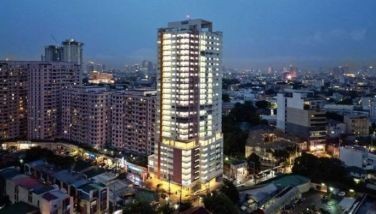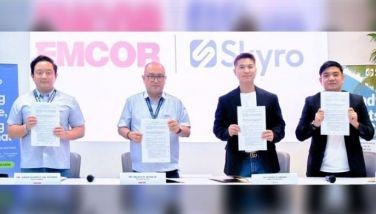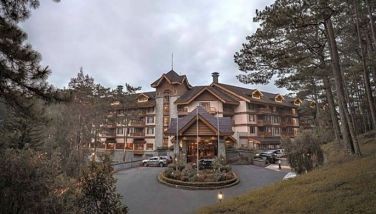RAM, the NGO

January 15, 2002 | 12:00am
The tattoos are still there, on the back of the hand, near the crook between thumb and forefinger. On one hand are the letters GF, for Guardians Fraternity – a mark of the Rebolusyonaryong Alyansang Makabansa. On the other, SGF, for Supreme Godfather. Only a handful of RAMboys have the second one. Domingo Calajate is one of the few.
In his mid-60s, the retired commodore can no longer qualify as a "boy," but he still chairs the RAM executive committee.
RAM was the rightist band whose rakish leaders used to elicit excited squeals from swooning women in the euphoric days after the 1986 people power revolt. These days its members swear the acronym stands for "Right Away, Ma’m" – a grouping of men scared of their wives.
Cute. So how come the group continues to be linked to purported plots to topple the one-year-old Arroyo administration? The latest buzz is that three soldiers surnamed Malajacan, Turingan and Purugganan are training some guys in a political warlord’s place in Cavite for a bit of anti-administration mischief. Would they happen to be Jake Malajacan, Felix Turingan and Abraham Purugganan of RAMboys notoriety?
This I didn’t get from any A-1 source. But I think my source is still better than the ones feeding garbage info to our gullible intelligence officials, who swallow everything then announce coup plots in press conferences, thus fanning national hysteria.
Calajate, however, swears that his group is through with plotting coups. RAM, he maintains, is now registered with the Securities and Exchange Commission and functions more as a non-government organization (NGO). He says it now has 10,000 card-bearing members nationwide, 40 percent of whom are civilians who were never part of the uniformed services, and the group is still growing.
He also insists that the P30 million the group received as livelihood fund from the government after a peace agreement was forged in 1997 is all accounted for. RAM stopped lending money from the fund after just a year, however, because members were not repaying the loans, Calajate said. Instead the group bought the Our Lady of Lourdes Academy in San Jose del Monte, Bulacan for around P25 million as an investment and to provide education at 50 percent discount to the children of RAM members. The school is still in operation.
What do retired putschists do? Calajate, in between worrying about health problems, is a director of the Philippine Amusement and Gaming Corp. Edgardo Abenina, now estranged from the group, was until recently chief of the Land Transportation Office. There are several senior officers still in the AFP.
Old putschists don’t die or fade away; they make a run for public office. Most of them lost, but RAM leader Gregorio Honasan, as we all know, has made it twice to the Senate.
Calajate denies that Honasan pocketed the RAM’s livelihood funds and used it for his campaign. The RAM chairman also says that Honasan, who was charged with rebellion for the May 1 riots that sought to reinstall Joseph Estrada as president last year, has since reconciled with the group, which had supported EDSA Dos. Over breakfast at Honasan’s Senate office, the two buried old grudges.
"What could I do? He was like a prodigal son coming home," Calajate said.
Did they talk about their dreams that were never supposed to die? The young RAMboys made that their slogan as they sought reforms in the Marcos-era Armed Forces of the Philippines. Later, as the nation reeled from a succession of coup attempts during the Aquino administration, detractors would say the RAMboys were merely dreaming of installing their political patron Juan Ponce Enrile at Malacañang.
During the Marcos regime, however, the call for reforms resonated even beyond the AFP. For several months after the 1986 EDSA revolt, the RAMboys were seen as protectors of the people’s will and expectations for change.
It took less than a year for the EDSA forces to fall apart. In November 1986 Enrile was sacked as defense chief amid a coup plot code-named God Save the Queen. The RAMboys were accused of summarily executing leftists, among them labor leader Rolando Olalia.
Nearly 16 years after EDSA I, has Philippine society changed much? We all know the answer to this. At least the veteran coup plotters are no longer plotting.
Calajate, being a PAGCOR director, won’t comment on the performance of President Arroyo. But he says their dream for reforms is not yet dead.
"It remains a dream," he says with a wry smile. "But we continue dreaming."
In his mid-60s, the retired commodore can no longer qualify as a "boy," but he still chairs the RAM executive committee.
RAM was the rightist band whose rakish leaders used to elicit excited squeals from swooning women in the euphoric days after the 1986 people power revolt. These days its members swear the acronym stands for "Right Away, Ma’m" – a grouping of men scared of their wives.
This I didn’t get from any A-1 source. But I think my source is still better than the ones feeding garbage info to our gullible intelligence officials, who swallow everything then announce coup plots in press conferences, thus fanning national hysteria.
Calajate, however, swears that his group is through with plotting coups. RAM, he maintains, is now registered with the Securities and Exchange Commission and functions more as a non-government organization (NGO). He says it now has 10,000 card-bearing members nationwide, 40 percent of whom are civilians who were never part of the uniformed services, and the group is still growing.
He also insists that the P30 million the group received as livelihood fund from the government after a peace agreement was forged in 1997 is all accounted for. RAM stopped lending money from the fund after just a year, however, because members were not repaying the loans, Calajate said. Instead the group bought the Our Lady of Lourdes Academy in San Jose del Monte, Bulacan for around P25 million as an investment and to provide education at 50 percent discount to the children of RAM members. The school is still in operation.
Old putschists don’t die or fade away; they make a run for public office. Most of them lost, but RAM leader Gregorio Honasan, as we all know, has made it twice to the Senate.
Calajate denies that Honasan pocketed the RAM’s livelihood funds and used it for his campaign. The RAM chairman also says that Honasan, who was charged with rebellion for the May 1 riots that sought to reinstall Joseph Estrada as president last year, has since reconciled with the group, which had supported EDSA Dos. Over breakfast at Honasan’s Senate office, the two buried old grudges.
"What could I do? He was like a prodigal son coming home," Calajate said.
Did they talk about their dreams that were never supposed to die? The young RAMboys made that their slogan as they sought reforms in the Marcos-era Armed Forces of the Philippines. Later, as the nation reeled from a succession of coup attempts during the Aquino administration, detractors would say the RAMboys were merely dreaming of installing their political patron Juan Ponce Enrile at Malacañang.
During the Marcos regime, however, the call for reforms resonated even beyond the AFP. For several months after the 1986 EDSA revolt, the RAMboys were seen as protectors of the people’s will and expectations for change.
It took less than a year for the EDSA forces to fall apart. In November 1986 Enrile was sacked as defense chief amid a coup plot code-named God Save the Queen. The RAMboys were accused of summarily executing leftists, among them labor leader Rolando Olalia.
Nearly 16 years after EDSA I, has Philippine society changed much? We all know the answer to this. At least the veteran coup plotters are no longer plotting.
Calajate, being a PAGCOR director, won’t comment on the performance of President Arroyo. But he says their dream for reforms is not yet dead.
"It remains a dream," he says with a wry smile. "But we continue dreaming."
BrandSpace Articles
<
>
- Latest
- Trending
Trending
Latest
Trending
Recommended

February 17, 2025 - 5:18pm


























